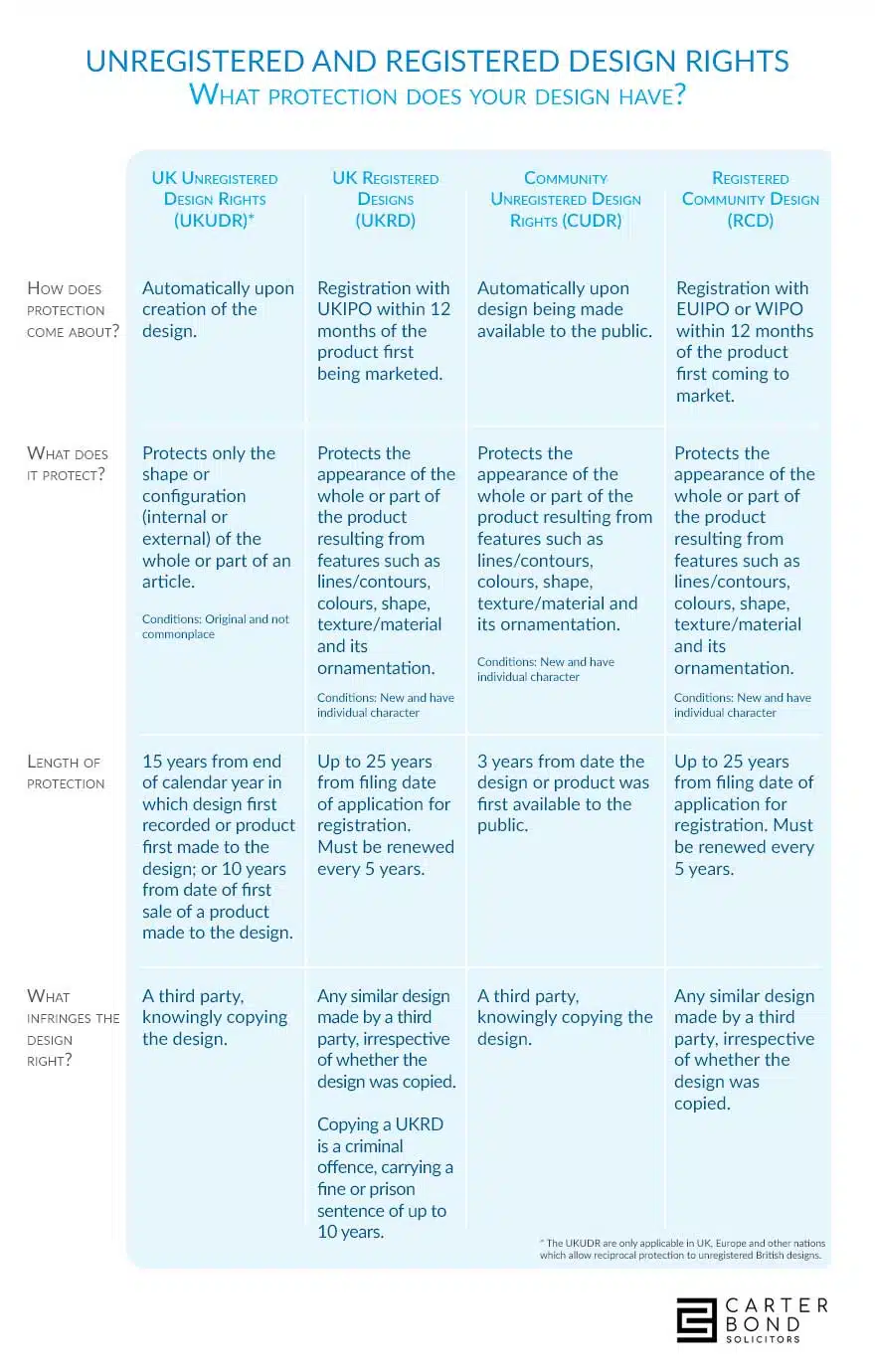Good design lies at the heart of any good business. An excellent design transforms a product into a brand- think Coca-Cola’s distinctively curvaceous bottle or the iPhone’s iconic product design- so it’s important to protect the appearance of your product. The most common methods of protecting the design of your product here in the UK are through registered and unregistered design rights.
What is a design?
It’s not just fashion brands that need design protection. Your ‘design’ is anything related to the visual aspects of your product. It could be a distinctive logo, a pattern you decorate your goods with, symbols, product shape or packaging.
In simple words, a registered design is protection for the appearance of the whole or part of your product.To register your design, it needs to be original and unique. A similar design cannot already exist in the marketplace.
UK Unregistered Design Rights
Here in the UK, we have a two-fold system of protecting design rights; unregistered and registered design rights. Unregistered design rights are automatically given with no formal application. You acquire the rights by creating a product to the design, or producing a design document. If a third party copies your design, they will have infringed upon your design rights.
Unregistered design rights don’t last forever. They expire 15 years from the year the design was first recorded, whether in manufacture or a design document. However, if your product containing the design is made available for sale or hire anywhere in the world within the first 5 years then the date shifts to 10 years from the first sale. This mean that for most commercially useful designs, the unregistered design rights last for 10 years from first marketing. In the last 5 years of protection, any party is entitled to obtain a Licence to make or sell the design.
Unregistered design rights exist throughout the European Union as Community Unregistered Design Rights, giving roughly the same amount of protection but lasting for only 3 years.
UK Registered Design Rights
Registered design rights are received through a formal application to the UK Intellectual Property Office. In order to qualify for protection from UKIPO, the design has to be ‘new’ and show ‘individual character’. It can’t be a generic mark or a design that produces no overall different impression from other designs. Registered design rights grant you monopoly rights, that is, only the holder of the rights has the exclusive right to use all or part of the design.
A UK Registered design can last for 25 years of protection, but has to be renewed every 5 years. Registered design rights exist throughout the European Union under the name of Registered Community Designs. Like UK Registered designs, the protection lasts for 25 years but must be renewed every 5 years.
So why register for Registered Design Rights when Unregistered Design Rights exist?
The difference between registered and unregistered design rights is all about the level of protection. Registered design rights have much better protection than unregistered designs.
Say, for example, you think another company is infringing on the design of your product. If the mark is unregistered, you have to prove that the third party has copied your design in order to win against them. You have to prove that they took the idea directly from you to make their product. If your product is a registered design, then you only have to prove that their product is too similar to yours- regardless of whether the alleged infringing design was created entirely independently or with knowledge of the design.
There are other reasons as to why registered design rights; registered designs last much longer than unregistered designs (25 years for the former or 3 to 10 years for the latter); Unregistered design rights are limited, they do not give you monopoly over a design. On the other hand registered designs can provide extra protection on top of registered trade mark rights if your logo has graphic elements; and finally having a registered design helps your market competitiveness by adding business value. After all, shows your commitment to the product and is a registered design is an asset like any other- it can be sold, licensed out or transferred as the owner sees fit.



